Drone required 15 infoservisas
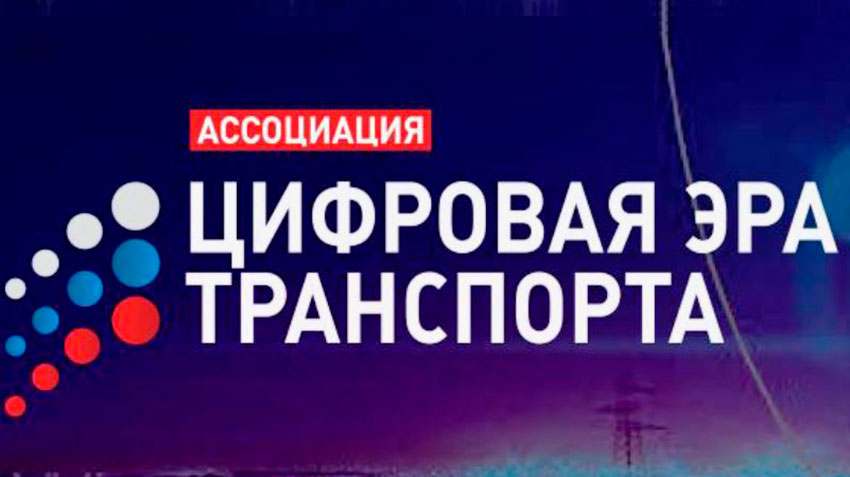
30 October 2018
Association tset believes that drones have a long way to
The forum "Avtoevolyutsiya 2018" the report "Current and objective requirements for the digital infrastructure of the road and connected to unmanned transport", made Vice-President of the Association "Digital Era" Transport Maxim Struchalin it is argued that for reliable and irreversible implementation of drones is necessary to develop and implement at least 15 different Fieldbus systems.
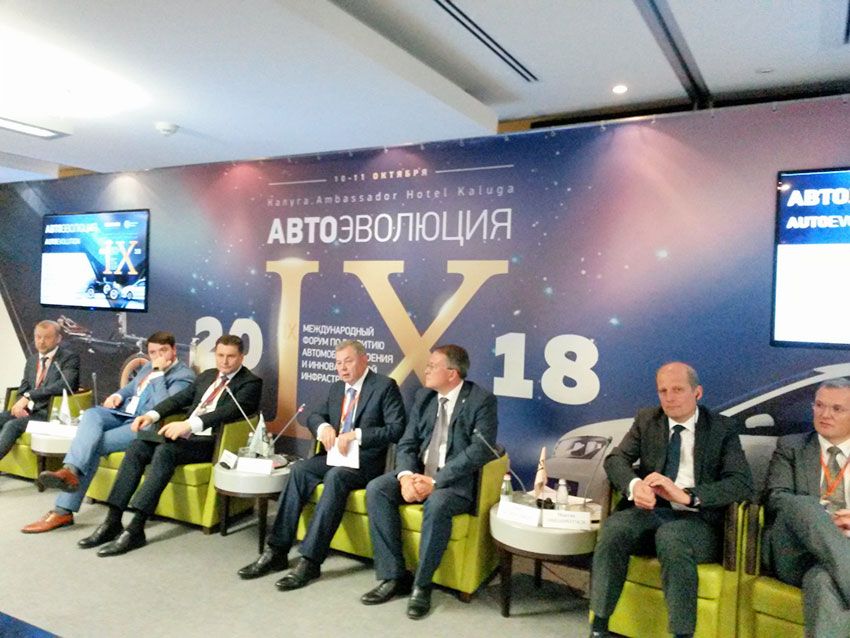
Among consumers of services of information, control and safety on the roads include: average vehicle road user, the vehicle integrated control system (VSAU), unmanned (BP) TC TC emergency services and road vehicles (maintenance, service, and so on.). So that the implementation of these services should be started at the present level of development of transport infrastructure. And yet for the safe introduction of PD in life are seen four stages ("model") of the functioning of a PSU vehicle on the roads, which can be implemented using two General approaches to use them artificial intelligence: "self directed," i.e., full autonomy or the concept of "big brother" when all the TS are connected to a single "brain center" and information and teams get under a dedicated and secure communication channels.
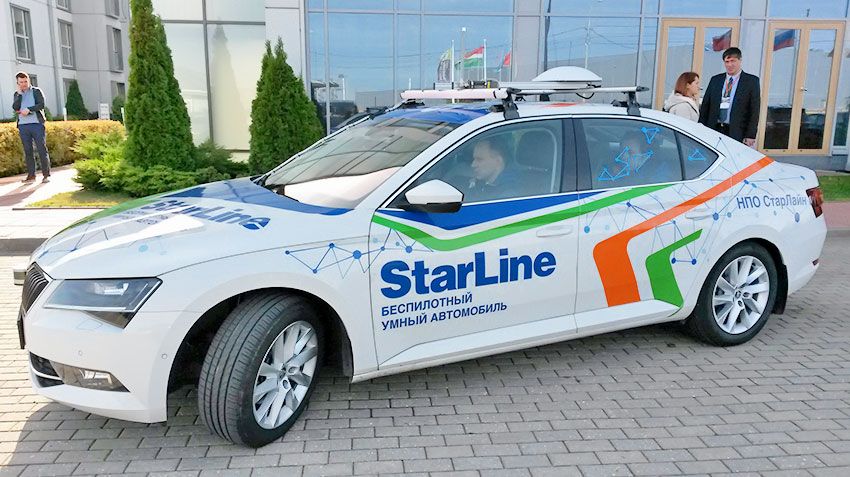
Stages of the introduction of BP TS described in the "operational models". So, according to the "model I" – a single BP moves to the indicated road or even strip. According to the "model II" – multiple BP move on a dedicated multi-lane road. On the "model III" – there is a co-movement of TC and BP normal ("chelovekonapravleny") of the vehicle on public roads. "Model IV" implies the involvement of only the user services and support connected to the vehicle.
ICT provision V2I / V2X drone includes (digital model of the road (CMD) + condition of the road), the traffic information (characteristics of traffic flow, characteristics of the vehicle), information about the vehicle (location and condition), and obtaining the control actions, monitoring and transmission of emergency information.
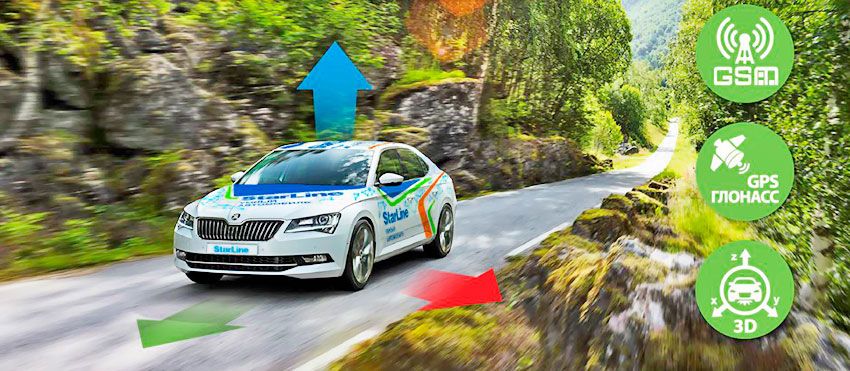
By the way CMD is to create a detailed "digital frame" of the road network, allowing BP vehicle to move confidently even in the absence of road markings and conditions fully contaminated (snow-covered) roads.
Providing infrastructure should include: it platform (according to the remark of M. Strekalov – completely original and so perfect, in addition to performing all the basic functions not to fall when overloaded and not be susceptible to viruses and hacker attacks); telecommunication networks and systems (according to M.Strekalova – by an order of magnitude more reliable than the current 4G and 5G, so that they could be trusted with the transportation of the children), the peripheral equipment on the road (means of improving the accuracy of positioning, external monitoring, wireless communication V2I).
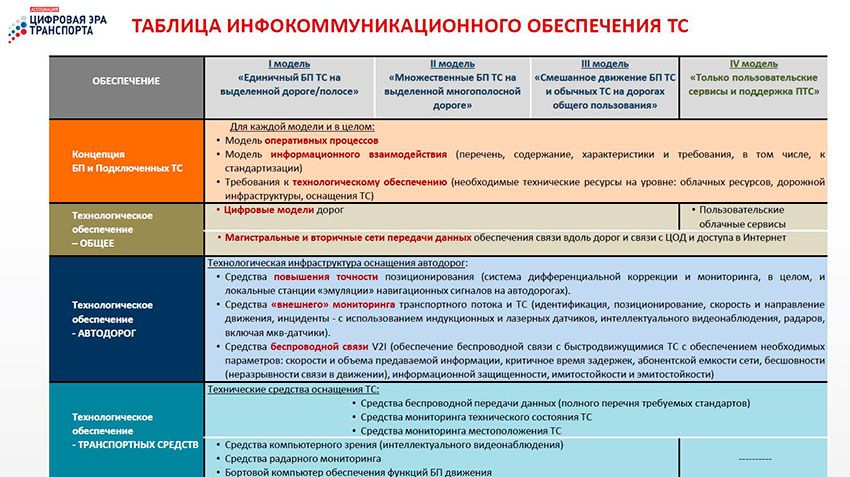
According to the table information and communication ensure the vehicle is painted in detail the necessary technological means to ensure reliable operation of drones and connected cars. Moreover, only when switching to the IV model, some simplification of the overall technology sector, where instead of the CMD will come custom cloud interfaces. It is possible that the "cloud" will eventually oust even the means of computer vision (intelligent video surveillance) and radar monitoring as well as to assume some of the functions of the onboard computer provide the functions of self-motion.
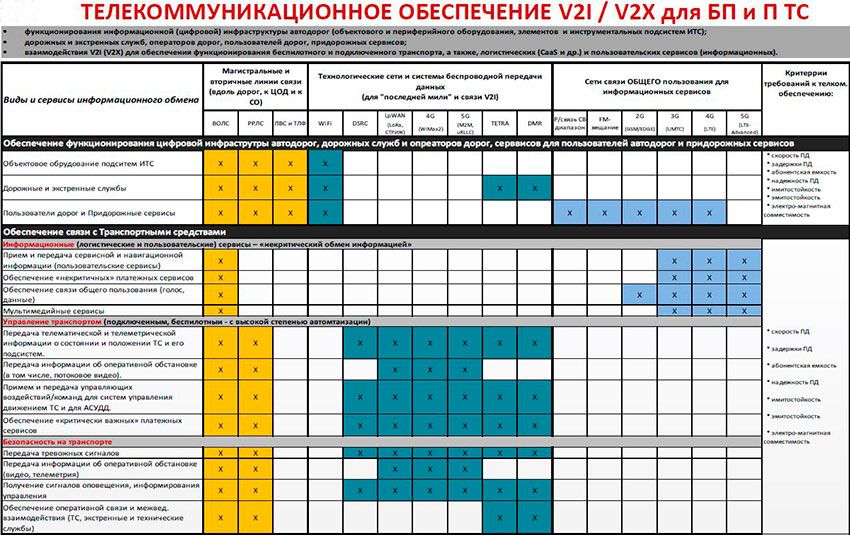
Table telecommunications security V2I / V2X to the PSU and connected TS becomes clear how complex and large challenges still stand in the way of implementing drones. According to M. Strekalova: "By analogy with conventional road construction, where the Foundation of the road placed about 12-15 layers of different materials, building a truly safe and reliable system of unmanned vehicles will require 15 levels of different systems and technologies, including existing certified (but requiring further expansion of the network coverage), and require finishing certification as well as such development which is still at an early stage.
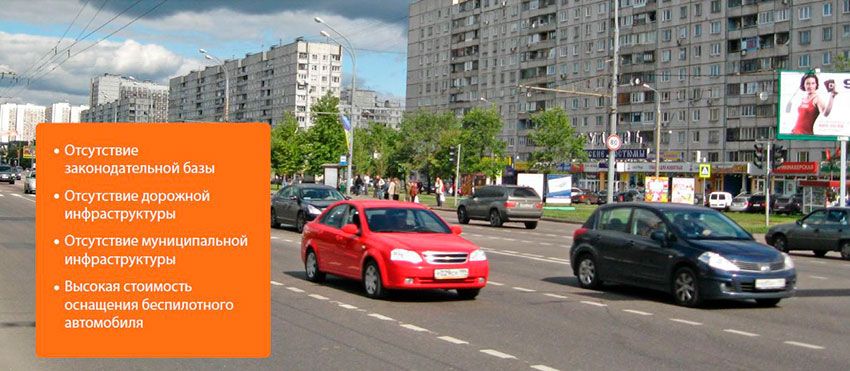
Part of this infrastructure, by the way, are useful for conventional vehicles, increasing their active and passive safety, and economic efficiency. The driver will leave the steering wheel only when the totality of data 15 services of information exchange to be fully used and complexed, and are backed by a relevant legislation.
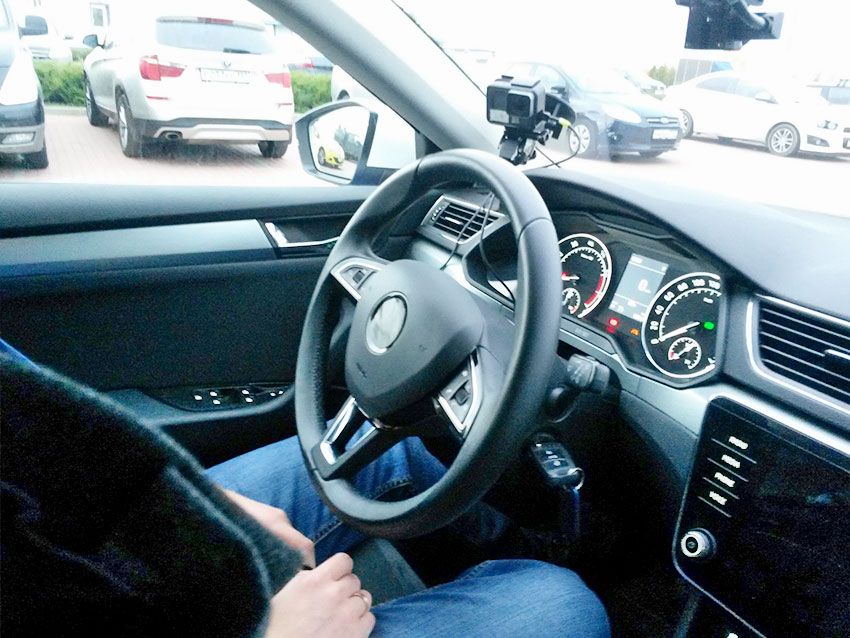
So that today, the problem of introduction of unmanned vehicles on the scale and expensive like building of Railways and Telegraph network two centuries ago..
|
|
|
Element was not found.








